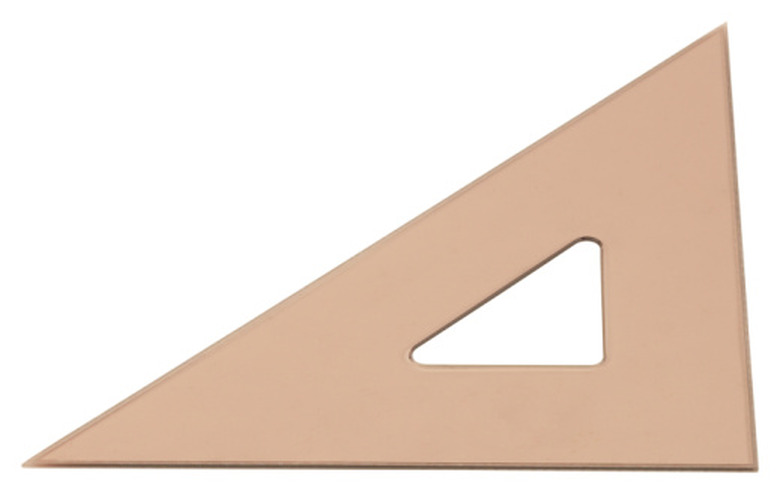How To Find The Height Of A Square
A square is a four-sided, two-dimensional shape. A square's four sides are equal in length, and its angles are all 90 degrees, or right angles. A square can be a rectangle (all 90 degree angles) or a rhombus (all sides are equal length). You can make a square as large or small as you'd like; the sides will always be the same length, and a square will always have four right angles.
Step 1
Determine if you can use trigonometry to find the height of the square. You can only use trigonometry if you have the length measurement for the diagonal line that can divide the square into two equal triangles. You need three pieces of information to use trigonometry. Any combination of three angles or sides will help you find the other missing measurements for the remaining angles or sides. The two exceptions are only having the three angle measurements or having only one angle and two sides.
Step 2
Determine which pieces of information you have. If you have the length of the diagonal line, you will be able to determine the height of the square. Knowing squares have four right angles, you also have two angles to use. The diagonal line cuts the right angle into two equal angles, half of a right angle. This is 45 degrees.
Step 3
Use cosine to find the height of the missing side. The cosine of the angle equals the adjacent side divided by the hypotenuse. Written, it is: cos(angle) = h/hypotenuse. As an example, the angle to use here is one of the 45 degree angles created by the diagonal line. The adjacent side is our unknown — the height of the square. The hypotenuse is the longest side of the triangle, the length of the diagonal that is dividing the square into two equal triangles.
Step 4
Set up your equation, where "h" equals the unknown height of the square, and the hypotenuse equals 50. Cosine(45 degrees) = h/50.
Step 5
Use a scientific calculator to figure out what the cosine of 45 is. The answer is .71. Now the equation reads .71 = h/50. This number will change if the angle is a different measurement; but for squares, this will always be the number, as the shape is no longer a square if it does not have four right angles.
Step 6
Use algebra to solve for the unknown "h." Multiply both sides by 50 to isolate the "h" by itself on the right side of the equation. This reverses the 50 being divided by "h." You now have 35.35 = h, where the diagonal line equals 50. The height of the square is 35.35. Use whichever units the length of the diagonal line is given in. This could be centimeters, inches or feet.
Things Needed
- Paper
- Pencil
- Scientific calculator
TL;DR (Too Long; Didn't Read)
You can also measure the height of the square, if it is sized correctly.
Cite This Article
MLA
Horky, Allison. "How To Find The Height Of A Square" sciencing.com, https://www.sciencing.com/height-square-8525436/. 24 April 2017.
APA
Horky, Allison. (2017, April 24). How To Find The Height Of A Square. sciencing.com. Retrieved from https://www.sciencing.com/height-square-8525436/
Chicago
Horky, Allison. How To Find The Height Of A Square last modified March 24, 2022. https://www.sciencing.com/height-square-8525436/
